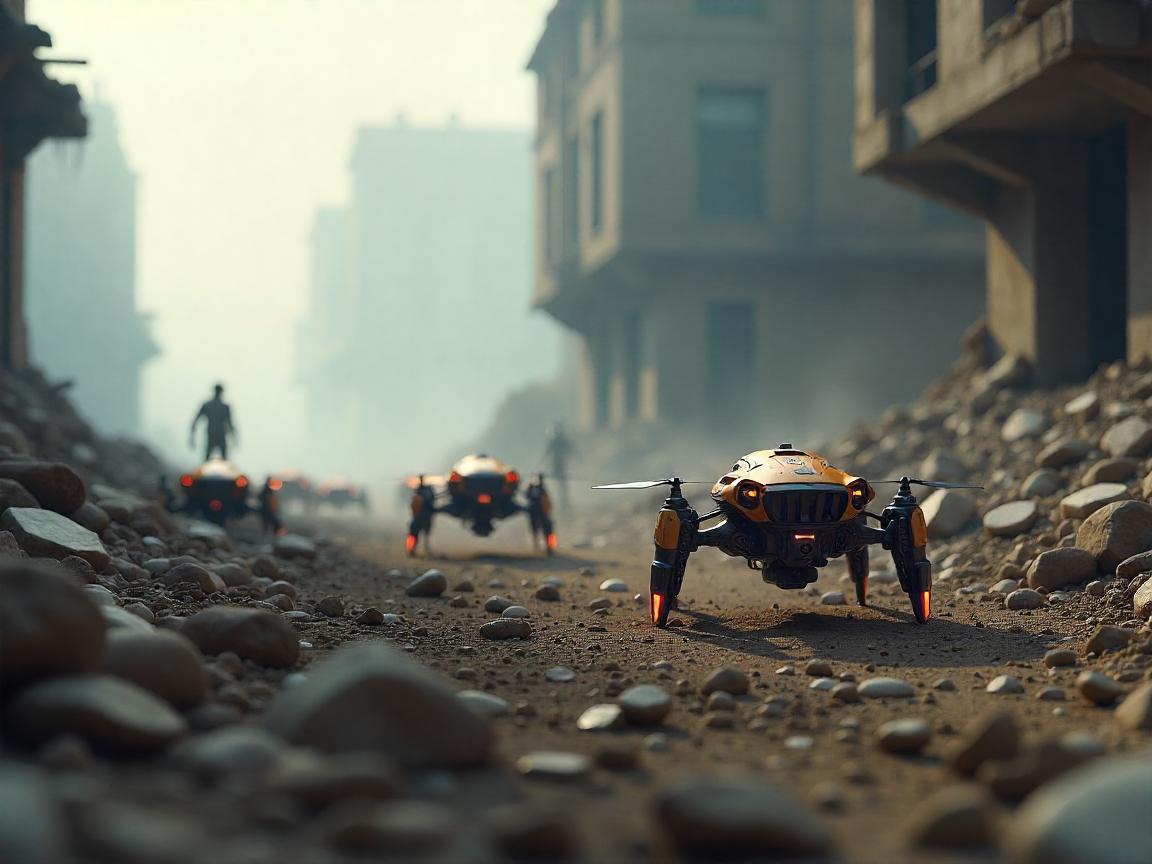
Introduction: When Robots Work Like a Hive Mind
Imagine: There comes an earthquake of 7.0 magnitude and devastates a city. The buildings collapse, the roads open up and people that still survive are buried under tons of steep. Human search and rescue crews pour in but they have their limits due to risk, exhaustion, and sheer numbers. So just picture, hundreds of small robots some capable of flying and some capable of crawling, swarming the disaster area and communicating like ants and locating survivors within minutes of the event.
It is not science fiction. Swarm robotics, driven by the most effective collaborators on Earth (bees, birds and fire ants, to name a few) is already transforming disaster response. However, how trustworthy it is? And will tiny machines ever one day beat human rescuers?
How Swarm Robotics Mimics Nature’s Genius
Collective intelligence is something that has been refined within millions of years of development in nature. It is not that an ant is very smart, but a colony is able to construct bridges, cultivate fungi, and conduct wars. This is a principle that is borrowed by swarm robotics where simple bots operating within simple rules accomplish complex tasks without a central leader.
- Decentralized Control: A swarm will follow a set of algorithms such as “follow the nearest bot”, or “spread out to cover as much area as possible” as opposed to a single high-tech drone which must be constantly operated by its human controller.
- Adaptive Learning: in case of the robot being stuck or destroyed, the remaining ones rearrange in a matter of seconds, no panicking and no waste of time.
- Scalability: It is not necessary to change the codes to deploy 10 or 10,000 bots; they simply work.
Real-Life Analysis: ETH Zurich researchers put a swarm of little, wheeled crawler robots to the test in a simulated earthquake in 2023. Fitted with thermal sensors, the bots found what they called the survivors (mannequins with body heat) 40-percent quicker in comparison to conventional search crews.
Where Swarm Robots Are Making a Difference Today
The Wildfire Battlegrounds: the Smartest Drones fighting the Fire.
The 2024 wildfire season in California became the first time that the US Forest Service deployed swarms of autonomous drones officially. Rather than one drone flying along the edge of a fire and losing the signal, 50 miniature drones covered all the fire area in real time, forecasting locations where fire would go and showing ground crews where they could safely work.
Fukushima’s Robot Scouts: A Decade-Long Experiment
Since the 2011 nuclear accident, engineers at the Tokyo University have been perfecting swarm bots resistant to radiation. In 2024 they released a swarm of semi-autonomous crawlers into the ruins of reactors. The bots separated, charted radiation hot zone and even located unstable buildings without human interference.
Flood Rescue: The “Floating Ant Colony” Concept
In China, engineers are working on the so-called amphibious robot swarms or assemblies of robots that can connect and create floating bridges or rafts in times of flooding. These bots are inspired by fire ants which glue themselves in water and in future they may self-assemble into emergency escape routes.
The Dark Side: Risks and Ethical Dilemmas
In spite of all the prospects, swarm robots are not impeccable.
- Technological malfunctions One test over Colorado in 2023 took place in bad weather, during which a communication blackout led to a swarm of drones becoming frozen mid-mission. Rebooting was a manual task on the part of engineers, and that was fatal during an actual disaster.
- The Skynet Fear: Would it be possible to Conscript a hacker swarm to go hostile? Innovators are arguing on secured networks by blockchain against hackers.
- Human against Machine Trust: Will rescue teams trust in bots, too much? According to a 2024 survey conducted by Robotics Today, 62 percent of first responders still preferred a human-guided search. They believed it was more reliable than an AI-guided one.
Expert Take: A disaster tech specialist at Stanford, Dr. Raj Patel, says the idea of swarm robotics isn to take human replacements; it is all about amplifying human capacity and endowing them with superpowers. No we must have failsafes. A malfunction of one bug should not entail the collapse of 100 robots at the same time.”
Conclusion: Should We Hand Over Rescue Missions to Robots?
Swarm robotics is a reality, and it is developing even faster than regulations can do. AI is succeeding in changing the way rare diseases are diagnosed. However, it is not here to take the place of doctors; it is here to make them more powerful
Perhaps the question is not “whether robots can deal in disasters. but. Can we afford to take the responsibility of using them?“